“Milk Tart” is a very common specialty from South Africa – and is also one of my husband’s most favorite childhood desserts. You can purchase Milk Tart (a.k.a. Melktert) in markets or bakeries all around Cape Town – or like most people, just make it at home to serve as a dessert or an accompaniment with afternoon tea. It’s similar to an American custard pie, but with a higher milk to egg ratio – bringing out more of the “milk” flavor.
Like most South African dishes, the Milk Tart is thought to be an amalgam of various types of cuisine. This particular dish is thought to have originated in the latter half of the 17th century by Dutch settlers in South Africa. The Dutch East India Company established Cape Town in 1652 as a way-station for ships traveling from the Netherlands to Indonesia and back. Their ships would bring cinnamon and other spices to Cape Town (and Europe) from South East Asia. Local bakers used the imported cinnamon, combined with fresh dairy from farms in the Cape Colony, to create this wonderful custard based tart.
My version of this tart is slightly non-traditional. Never having tasted actual Milk Tart in South Africa, I had no clue what the crust was supposed to be like. Some recipes that I found online referred to a crumb-style crust, others a rolled pastry style crust, and I even found a few mentions of a puff pastry style crust (similar to that of a Portuguese egg tart). The way my husband described his favorite version, I decided to go with a shortbread crust. Shortbread crusts are easier to make (no rolling pin needed!) – and I prefer the cookie like crumble of this crust against the milky custard. For best results, use whole milk only.
South African Milk Tart:
- 3 c. whole milk
- 1 1/2 T. butter
- 2 T. flour
- 3/4 c. sugar
- 2 tsp. cornstarch
- 2 eggs
- 1 tsp. vanilla extract
- 1/2 tsp. salt
- 1-2 tsp. cinnamon
Shortbread crust:
- 1/2 c. unsalted butter
- 1/2 c. sugar
- 1 1/4 c. flour
- 1/2 tsp. salt
1. First make the shortbread crust. Preheat the oven to 350 degrees. Pulse all shortbread ingredients in a food processor until the texture of cornmeal.
2. Press the shortbread mixture into the sides and bottom of a glass pie pan. Bake for 18-20 minutes.
3. While the crust is baking, heat the milk and butter in a small saucepan over medium heat until reaches a simmer. (Stir frequently to avoid scorching the milk.) Turn off the heat.
4. Combine the flour, sugar, cornstarch, eggs, vanilla, and salt in a small bowl.
5. Add a ladle of hot milk to the egg mixture, and whisk quickly to temper. Continue to add a ladle of hot milk, whisking in between. After adding about 3-4 ladles of hot milk into the egg mixture, pour the warmed egg mixture into the hot milk (in the sauce pan) and whisk again to combine.
6. Heat the saucepan over medium, while continuing to whisk. Once the mixture begins to bubble slightly and thicken, remove from the heat and continue to whisk for another minute. Do NOT continue to cook once it reaches this point – otherwise your custard will curdle and become grainy.
7. Pour the custard into the baked crust, and sprinkle with cinnamon. Refrigerate, and serve cold.

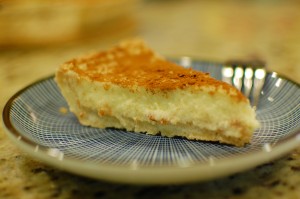

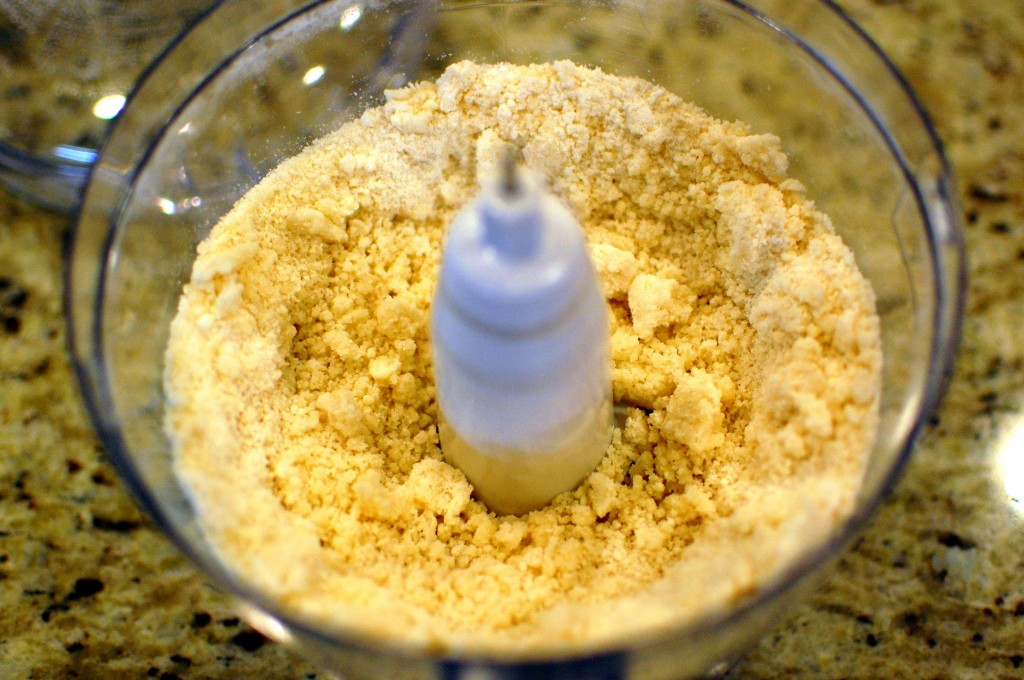
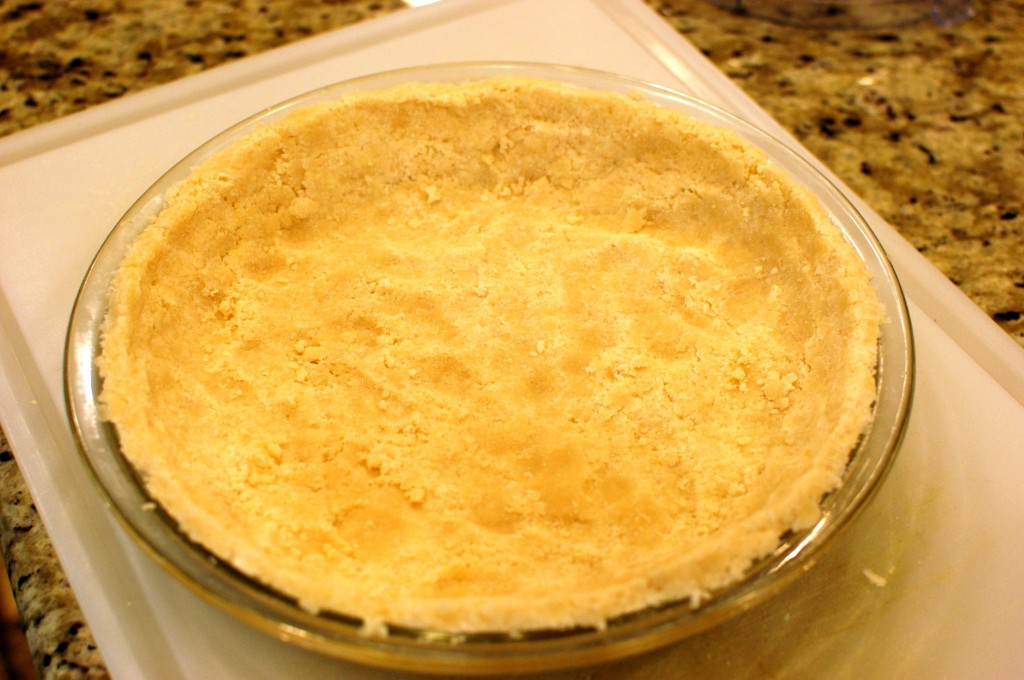
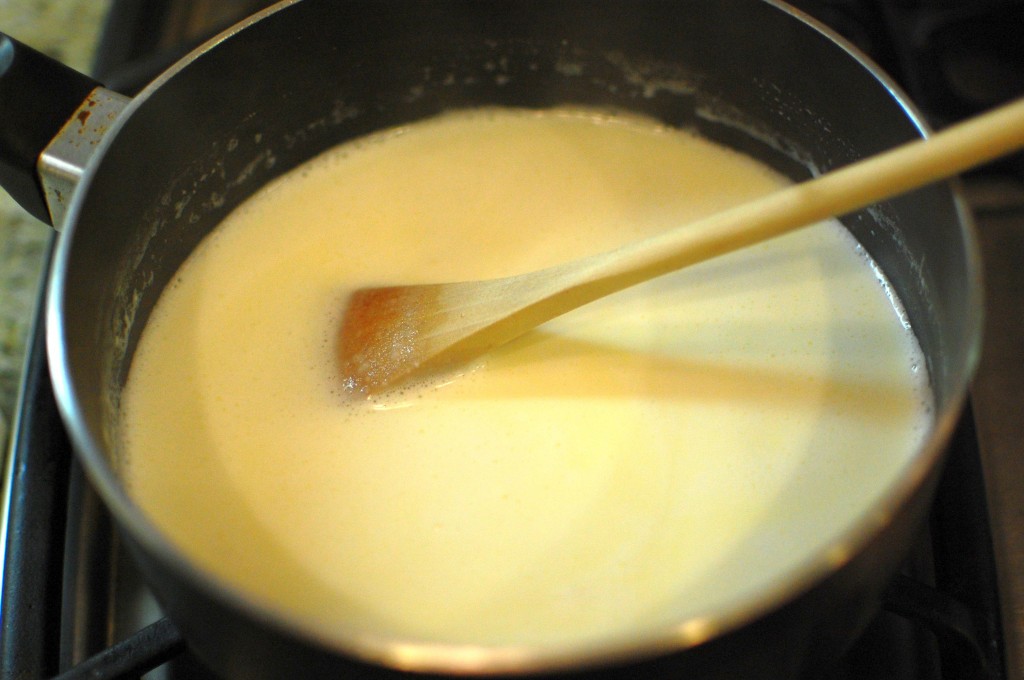
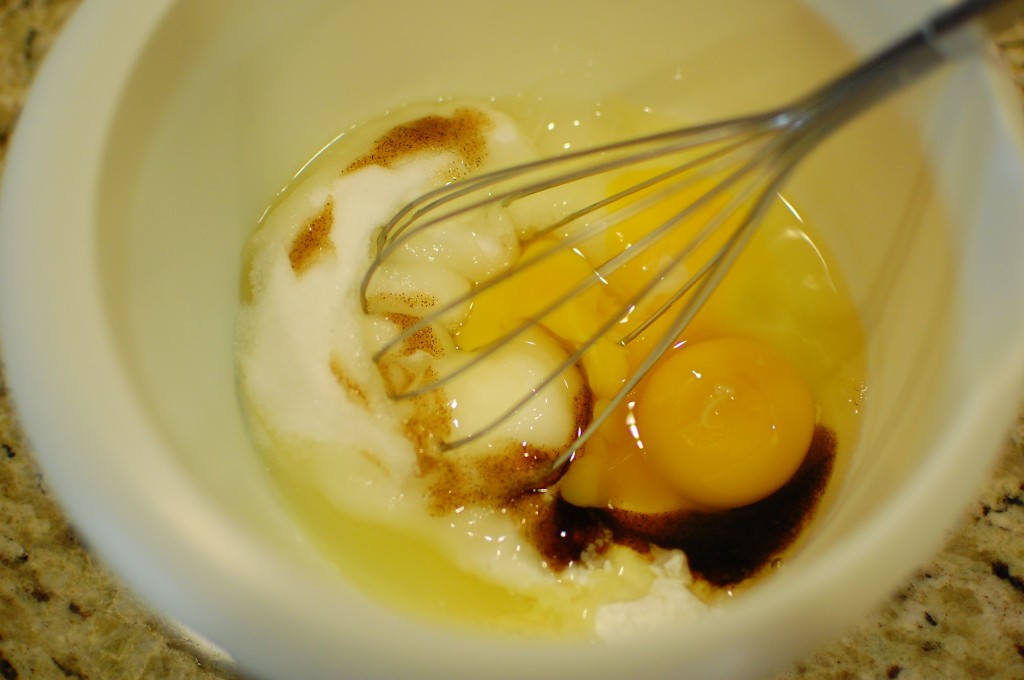
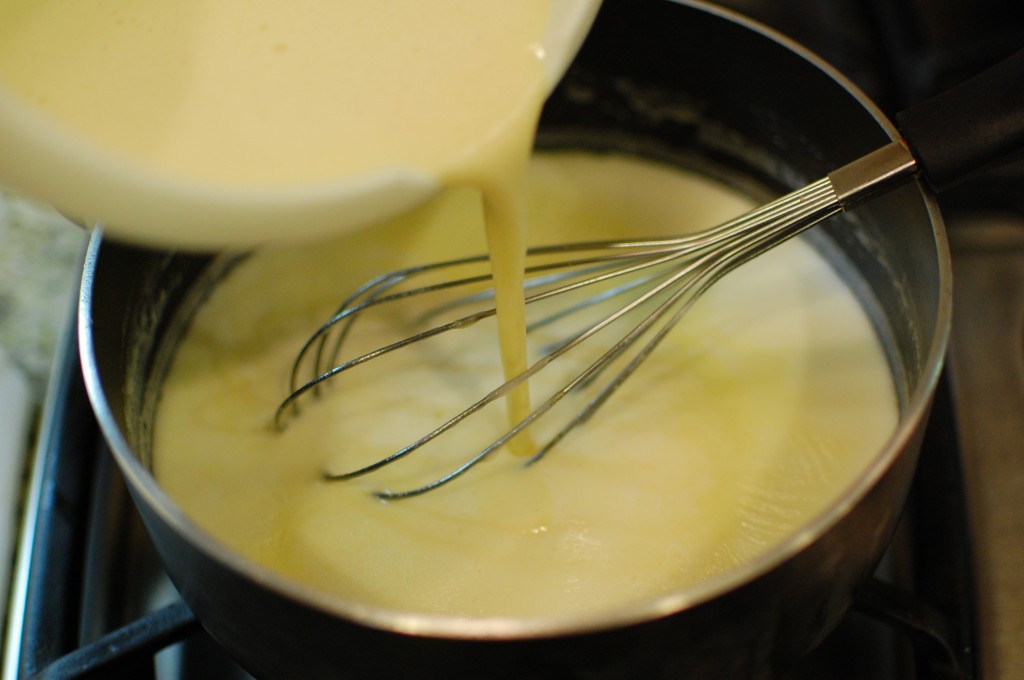
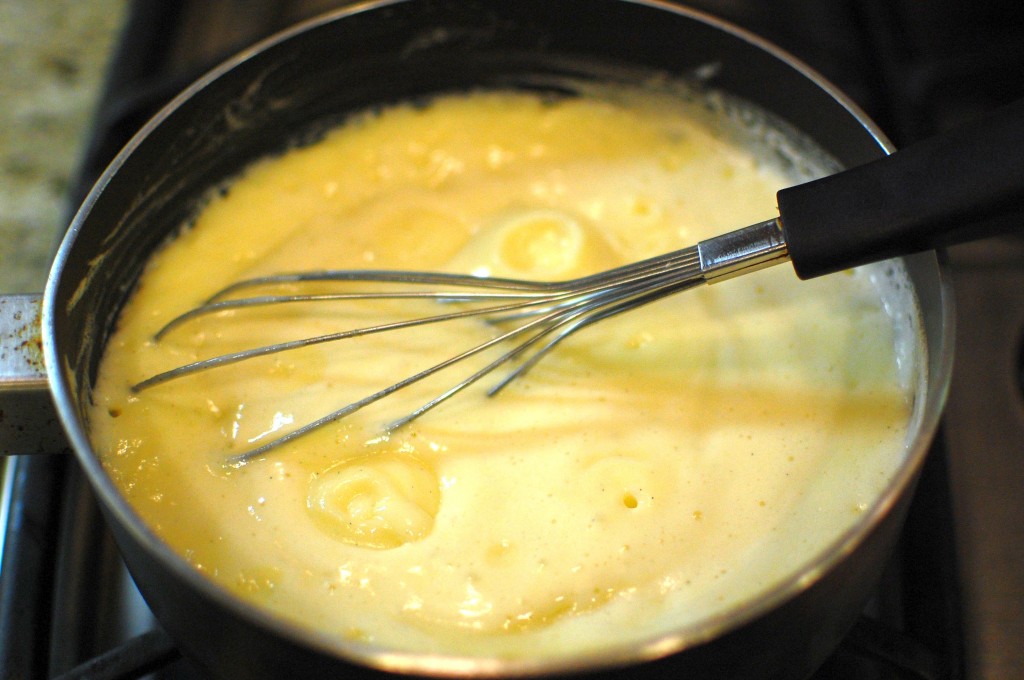
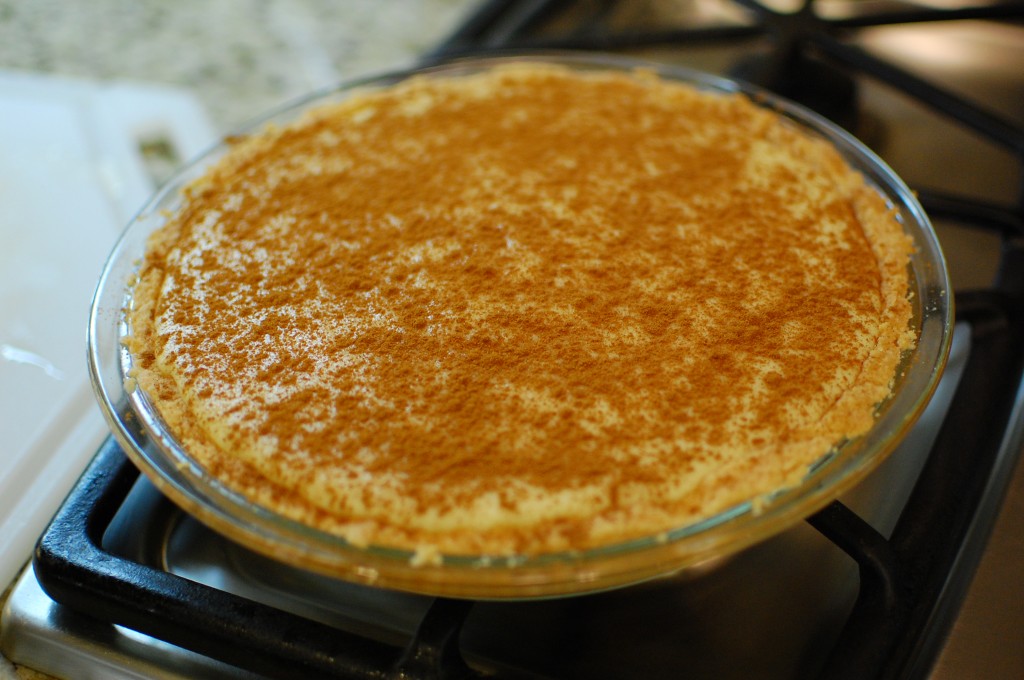


Hello! Just happened to stumble upon this and this recipe sounds lovely! I have a question though: if I don’t have a food processor to prepare the shortbread crust in, would an electric whisk suffice instead? Or will it not give the expected texture? Have never tried making this type of crust before so your help would be appreciated!
Hi Sabrina!
The food processor speeds up the process, but it’s not absolutely necessary. You can just cut the butter into the dry ingredients with a hand held pastry blender:
http://www.williams-sonoma.com/products/stainless-steel-pastry-blender/
If you don’t have a pastry blender, you can use two butter knives, and just use crosswise cutting motions to cut the butter into the flour. It takes a little bit longer to do it this way… but you will end up with the right texture.
I’m not sure if an electric whisk or mixer would work – this is more likely to cream the butter into the flour, which you don’t want. You actually want a crumb like texture – not a dough.
Oh wow, this is really nice.My mom don’t really like eggs so I guess I can make this for her and boost up the flavour a bit by adding lemon in it.
I’m looking for ways to use my goat milk. So my first question is you say to use whole milk, is it due to the milk fat/cream? My goats don’t have a lot of fat/cream in their milk. And my second question is can I freeze these pies?
Goat milk! Now that’s a challenge – I’ve never used goat milk before, so I’m not very familiar with it. In this recipe, I use whole (cow’s) milk over skim or lowfat because the higher fat content creates a richer and creamier final custard. If you want to try using goat milk – why not? If it doesn’t turn out to your liking, you can try adding a bit of melted butter or heavy cream on your next try to see if it turns out better?
I’ve never frozen the milk tart before – so I don’t know if you can or not. It does last for almost a week if you cover tightly with plastic wrap and refrigerate. Sorry I don’t have better answers for you!
I followed your directions for the crust perfectly, and when the tart was done, the filling was delicious but the crust was like concrete and I could not even cut it. Had to scoop out the filling with a spoon. I had to soak the pie plate in warm water for over one hour to loosen the crust and clean the plate. I will use your recipe for the filling but will look for another recipe for a crust. Sorry.
Well I’m glad the filling worked for you. For the crust, this is shortbread, so you don’t want to press too hard and compact it. Just gently press the crust into the pan into the sides and bottom… don’t squeeze all the air pockets out of it. You want the crust to take on the shape of the pan and stick to the sides, but you don’t want to “smoosh” it too hard. Sorry it didn’t work for you.
Hi Mika! Just Want To Thank U For Posting Such great South African Melktert And Fudge Recipes…Two Of My All Time Favourite Sweet treats From Childhood! Blessings To U And Your Family.
You’re welcome!